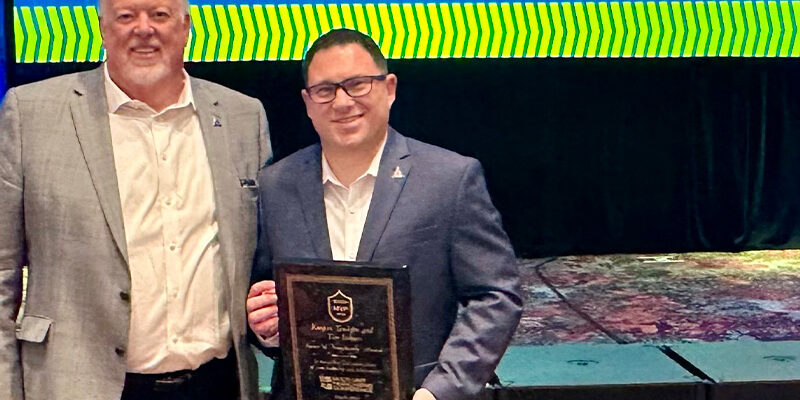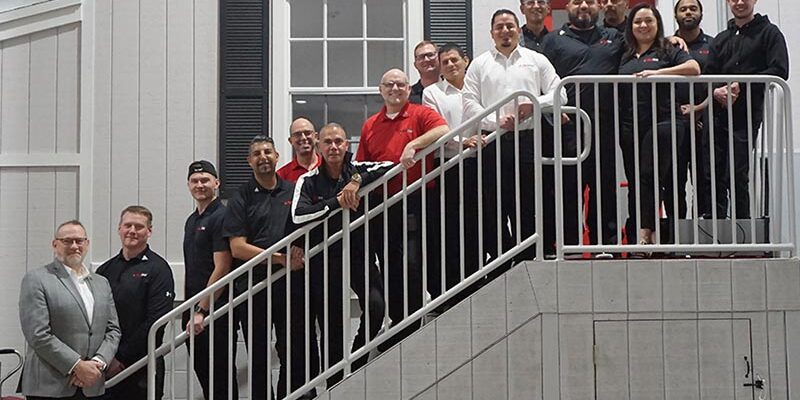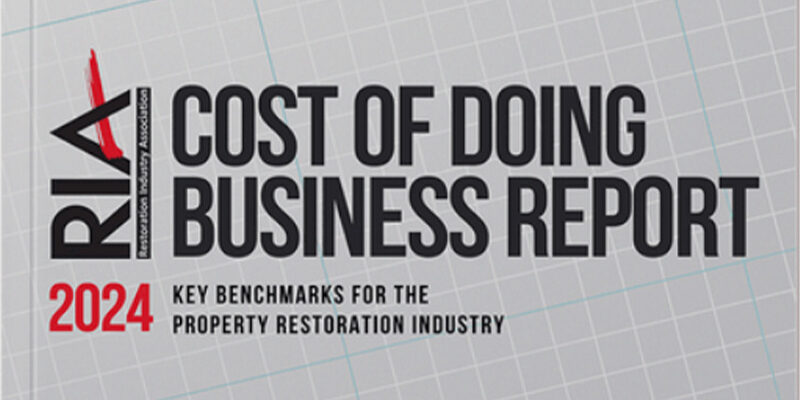RIA’s AGA Restoration Advocacy Report 4

TO: All Restoration Industry Professionals
FROM: Edward H. Cross, Esq., Chairman of the RIA Advocacy and Government Affairs Committee
DATE: September 21, 2019
Join or Perish
If restoration companies are unwilling to unite, advocate for sustainable claims practices, and take a proactive approach with insurance carrier claims policies, then the restoration industry, at least as we know it, could cease to exist within a decade. The Restoration Industry Association’s Advocacy and Government Affairs (AGA) Committee has made major strides to build unity within the industry and is moving aggressively to level the playing field for restorers, both legally and financially. We extend our heartfelt appreciation to the hundreds of restorers who have invested time, ideas, and money to this growing movement.
The road to victory
In prior issues of this publication, we have outlined the steps in the plan to achieve our goals, and the completed tasks. The AGA presently has four subcommittees: the Pricing Subcommittee, chaired by Dave Robbins; the Third Party Administrator (TPA) Subcommittee, chaired by Ben Looper; the Investment Subcommittee, chaired by Warner Cruz; and the Third Party Consultant (TPC) Subcommittee. Every member of the team is deeply devoted to the success of this effort and to reverse the trends that threaten the industry.
Dealing with third party administrators
Restorers, especially with smaller companies, are often the victims of unequal bargaining power in the settlement of restoration claims. The Restoration Industry Association (RIA) stands ready to give restorers the tools they need to neutralize these challenges. The RIA Board of Directors recently approved the Association’s first-ever position paper. This milestone was possible due to the work of the AGA’s Third Party Administrator (TPA) Subcommittee. It addresses best practices for restorers confronted with requests from TPAs for changes in scope and/or price. Confusion arises when TPA staff allege that these requests are based on program agreements. In that case, the TPA should specifically cite the contract provision that justifies the request. Contractors should be wary of arbitrary and capricious requests for price reductions, and when they are not required by the program agreement, contractors should request a review by the carrier adjuster. On November 1, 2019, the full TPA position paper will be on the AGA “Resources” page, under the “Advocacy” menu of the RIA website: www.restorationindustry.org.
Tools for success in price negotiations
The AGA Pricing Subcommittee, led by industry icon Dave Robbins, has amassed voluminous market data and is preparing an organized and focused challenge to certain aspects of standardized pricing platforms and the data collection methodologies behind them.
Many restorers are defeated in price negotiations with carriers because they do not have the information they need to counter common attacks on price and scope. Our reports and position papers will give restorers the ammunition they need to defend themselves and achieve fair results.
We reiterate that trade rates for restoration workers should rank among the highest in all construction-related trades, due to unstable building conditions, hazards, environmental issues, the time-sensitive nature of the work, and many other challenges. The AGA is concerned that prices reported in standardized pricing platforms are given far more weight than they deserve. The AGA wants to dispel the myth that Xactware “sets” prices. It does not. In the Frequently Asked Questions section of its eService Center, Xactware states: “How does Xactware set prices? While it may seem a trivial distinction, it is important to know that Xactware does not ‘set’ prices, but rather acts as a reporter of market price information. Xactware does not tell individuals what they should charge (or pay) for work, but rather provides information that is intended to be helpful in the estimating process” (Answer ID 2963).
Xactware collects price data through multiple channels, one of which is Xactanalysis. As explained in our last report, restorers must keep in mind that roughly 90% of the estimates uploaded to Xactanalysis are not from entities who perform actual work in the real world marketplace. Nonetheless, Xactware asserts that it goes to “great lengths to ensure that no one party or industry segment has any undue influence on the pricing data that we research and report on.” The AGA will address this imbalance and the apparent disconnect head-on. Many restorers wonder why any price should be considered in a market analysis if it does not come from a practitioner currently in the trade. Unbeknownst to many, Xactware states, “In the end, the correct price for any job is based upon an agreement between the purchaser and the provider: the price which the purchaser is willing to pay and the provider is willing to work” (Xactware Pricing Research Methodology report, February 6, 2018).
[quote align=’right’]“You agree not to prohibit or preclude deviations from the Price Data where contractor requirements, market conditions, demand or any other factor warrants the use of a different line item price in the specific situation.” Xactimate License Agreement, section 9[/quote]Restoration project conditions are varied and diverse and do not lend themselves well to a one-size-fits-all approach for pricing. Reports on market prices may or may not be relevant to a given job. Standardized prices are generic, non-specific, and inapplicable to many different scenarios. Open-mindedness and common sense should prevail in all instances. That’s why in order to obtain an Xactimate user’s license, insurers, TPAs, and contractors alike must agree in writing that they will not prohibit or preclude deviations from Xactimate prices when market conditions or other factors warrant deviation. The AGA urges restorers to look at the last sentence of the second paragraph of section 9 of their Xactimate License Agreement and employ it when someone insists on Xactimate prices. This point is seemingly unknown in many corners of the insurance industry.
Leveling the playing field with third party consultants (TPCs)
TPCs include independent adjusters, third party building consultants, commercial loss consultants, and construction “experts” who critique restoration methods and invoices. TPAs are not TPCs. Contractors agree to work with TPAs by signing up for their programs. TPCs, on the other hand, are imposed upon contractors without their consent.
Many third party building consultants and reviewers interfere with contractors’ business operations and systems. This diminishes the level of service provided to policyholders whose homes and businesses have been destroyed in a catastrophe. The AGA urges restorers to vigorously resist “Monday morning quarterbacking” from anyone who attempts to change the rules of the game after it is already underway or over.
The AGA’s TPC Subcommittee is comprised of experienced and passionate restoration specialists with hundreds of years of combined experience warding off assaults against industry standards of care and the hard-earned compensation of restorers across America. The subcommittee members are dedicated to formulating organized strategies and best practices to overcome the most harmful tactics of TPCs. The subcommittee created a list of dozens of inappropriate, unfair––and in some cases illegal––practices of TPCs. After careful consideration, the subcommittee elected to focus first on the following three TPC practices:
- TPC demands for receipts and other evidence of contractors’ costs
Restoration contractors do not typically work on a “cost plus” basis, so their costs are usually irrelevant. In most cases, contractors are under no obligation to provide them. Property insurance companies are generally required to pay the “usual and customary cost of the work.” That means retail price—not wholesale. When a contractor works hard, builds a good reputation, and treats his vendors well, his business grows and he enjoys greater buying power and earns well-deserved discounts. He alone has earned that reward––not the insurance company or the customer. Think of the shoe on the other foot and ask the adjuster if the insurance company will provide records of its costs when it issues invoices for premiums. Stay abreast of the true market prices for the services you provide and do not be shy about demanding the profit you earn. Seek legal advice from a lawyer licensed in your jurisdiction to learn more about your rights and obligations in this area.
- TPC demands for changes in methods or protocols
Those who provide professional services must perform at the level of members of the trade in good standing. “Good standing” means, among other things, that they are recognized in the trade as qualified and competent. Unfortunately, some TPCs are willing to jeopardize the integrity of a structure and the health and well-being of the occupants to stay in the good graces of an insurance company. They will at times do this unabashedly and at the expense of the contractor (and the contractor’s liability insurance carrier). Sometimes there is a benefit from having two sets of eyes review a situation. Nonetheless, contractors must stand together to resist the pressures of outside forces seeking to make contractors lower their standards or face legal peril. In most cases, contractors should withdraw from a project when they are under unrelenting pressure to perform work in a substandard manner, or they will be left holding the bag.
- Holding undisputed amounts “hostage” while demanding deeper price concessions in order to release funds
Contractors perform work in good faith reliance that they will be paid according to their contract. Unfortunately, some TPCs take advantage by causing entire invoices to be withheld when only a small portion is in dispute. The contractor feels forced to make unfair concessions and/or incur attorneys’ fees, as if to “buy” his own check. Some states require prompt payment of undisputed sums to contractors. Ask your local lawyer if your jurisdiction has such a statute and consider adding a provision to your contract requiring prompt payment of undisputed sums. Contractual penalties are often unenforceable, but your jurisdiction may allow you to tack on extra “fees” when undisputed sums remain unpaid.
Your investment is needed
The restoration industry faces heavy odds against powerful corporate alliances seeking to slash restorers’ profits more and more every year. The success of the AGA depends on your investment. Funds are needed for research and experts. Please invest now at www.restorationindustry.org/page/aga.
From day one, AGA started a powerful grassroots movement with the support and public support of conscientious restorers who want to get involved and make a difference. If you have not already done so, please download your Commitment Card here: https://bit.ly/2mh1wCO and email it to me today at [email protected].
Please join the movement by writing a check payable to “AGA” and sending it to the RIA at 330 N Wabash Ave., Suite 2000, Chicago, IL 60611. Investments are what drives progress, no matter how large or small the investment may be.
I am grateful for the opportunity to represent the RIA in this effort.
Respectfully,
RIA Advocacy and Government Affairs Committee
Edward H. Cross, Esq., Chairman
 Edward H. Cross is President of Law Offices of Edward H. Cross & Associates, PC in Palm Desert, California. Since 1997, he has specialized in representing restoration contractors across the country. He is licensed to practice law in California and Hawai’i. He can be reached via email at [email protected].
Edward H. Cross is President of Law Offices of Edward H. Cross & Associates, PC in Palm Desert, California. Since 1997, he has specialized in representing restoration contractors across the country. He is licensed to practice law in California and Hawai’i. He can be reached via email at [email protected].












